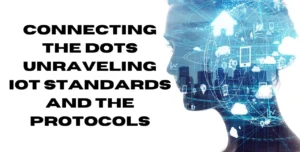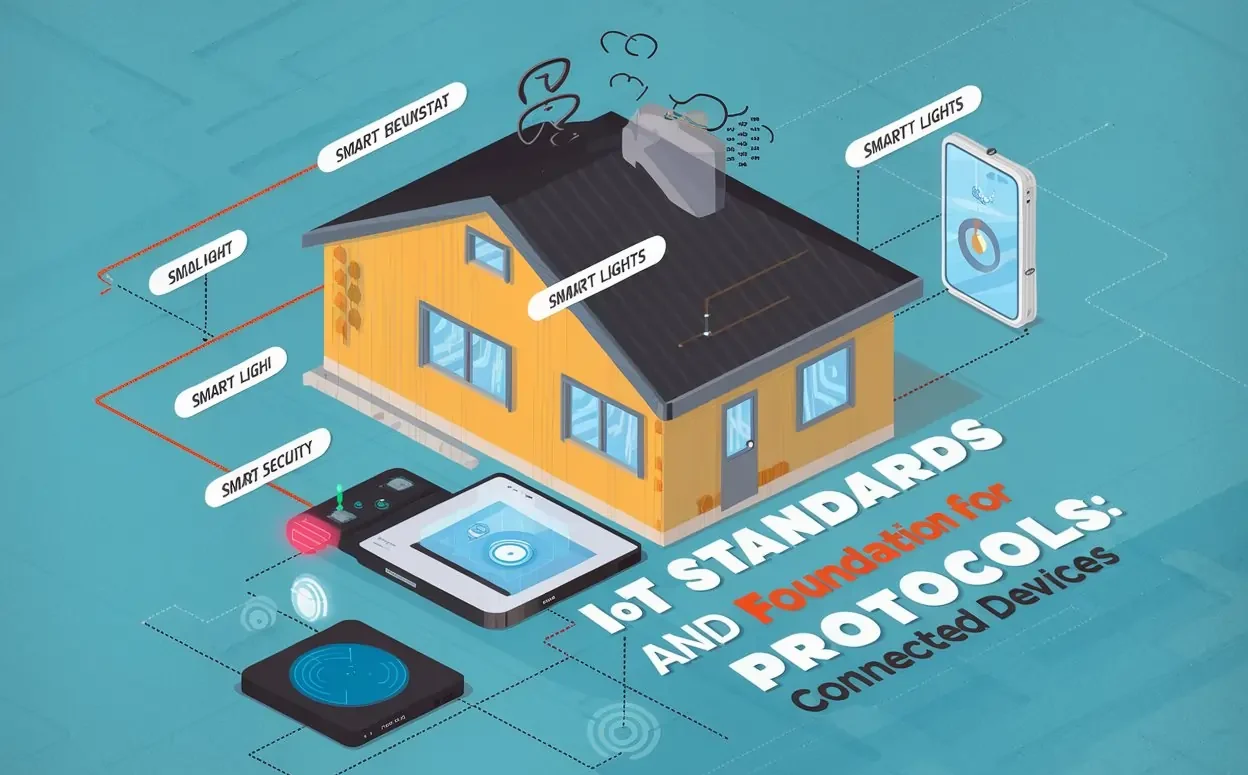Understanding IoT: An Overview of the Internet of Things
The Internet of Things connecting the dots: unraveling iot standards and protocols represents a significant technological evolution that interconnects physical devices, vehicles, buildings, and other objects via the internet, enabling them to collect and exchange data. This interconnected network facilitates a vast array of applications, from smart home devices to industrial automation, thereby transforming how individuals interact with their environment and how businesses operate.
A defining characteristic of IoT is its ability to create a seamless flow of information between devices, often through sensors and software that enable real-time communication. This capability not only enhances efficiency but also drives innovation across multiple sectors. In healthcare, for instance, IoT devices allow for remote patient monitoring, providing healthcare professionals with critical data without requiring physical visits by patients. Similarly, in agriculture, IoT technologies can be utilized for precision farming, optimizing resource use and improving crop yields.
The significance of IoT in today’s society cannot be overstated. Its applications span various industries, including transportation, manufacturing, energy, and smart cities. These use cases highlight the profound impact that IoT has on enhancing productivity, reducing costs, and improving quality of service. Furthermore, as everyday items increasingly incorporate IoT capabilities, individuals are finding themselves surrounded by connected devices that simplify daily tasks and improve living conditions.
Connectivity is the backbone of the IoT ecosystem. Devices communicate through various means, such as Wi-Fi, Bluetooth, or cellular networks, all of which are integral to the effective functioning of IoT systems. Understanding the fundamental concepts of IoT, along with its vast applications and implications, sets the stage for a deeper exploration of the essential standards and protocols governing this rapidly evolving landscape.
The Importance of Standards in IoT
In the rapidly evolving Internet of Things (IoT) ecosystem, the establishment of robust standards is crucial for ensuring the harmonious operation of a wide range of connected devices. Standards play a pivotal role in enhancing interoperability, which enables devices from different manufacturers to communicate effectively, share data, and work together seamlessly. This interoperability is fundamental for the entire IoT framework as it facilitates a cohesive user experience and minimizes the risk of device incompatibility.
Security is another critical aspect reinforced by the implementation of standards. Given the increasing number of connected devices, the vulnerability to cyber threats escalates. By adhering to established security protocols, manufacturers can protect user data and maintain the integrity of their devices. Standards provide a consistent framework for security measures, making it easier to identify and mitigate potential vulnerabilities across various IoT systems.
The scalability of IoT solutions is also significantly impacted by standardization. As organizations deploy more connected devices, it becomes essential to manage them efficiently. Robust standards ensure that new devices can be integrated into existing networks without significant hurdles, simplifying expansion and adaptation to future technological advances.
Numerous organizations, such as the Institute of Electrical and Electronics Engineers (IEEE), the Internet Engineering Task Force (IETF), and the International Telecommunication Union (ITU), are actively involved in the development of IoT standards. Each group contributes unique insights and expertise, addressing various challenges faced by the IoT industry, such as data privacy, device management, and interoperability.
Despite the clear benefits, the realm of IoT standards is not without challenges. Fragmentation, where multiple competing standards exist simultaneously, can hinder progress and lead to confusion among manufacturers and consumers alike. However, the collective push for unified standards holds the promise of a more streamlined and efficient IoT landscape, ultimately benefiting all stakeholders involved.

Key Protocols in IoT Communication
The effectiveness of Internet of Things (IoT) devices hinges significantly on the communication protocols they utilize. These protocols define how devices connect, communicate, and share data, ensuring reliable and efficient functionality across various applications. Among the salient protocols in IoT, three stand out due to their widespread use and distinctive features: MQTT, CoAP, and HTTP.
MQTT, or Message Queuing Telemetry Transport, is a lightweight messaging protocol that excels in scenarios where network bandwidth is limited and low latency is desired. Its publish-subscribe model allows for efficient message dissemination, making it particularly suitable for applications in smart homes and industrial automation. However, while MQTT is excellent for small messages, it can encounter limitations in scenarios where larger payloads or more complex data structures are necessary.
Conversely, CoAP (Constrained Application Protocol) is designed specifically for constrained devices and low-power networks. CoAP utilizes a RESTful approach similar to HTTP but is optimized for M2M (machine-to-machine) applications. Its built-in retransmission and observable resources make it robust and capable of handling sporadic connections. Nonetheless, it is essential to highlight that CoAP’s reliability can sometimes be overshadowed by its complexity when compared to simpler alternatives like MQTT.
HTTP (HyperText Transfer Protocol) is the backbone of the internet, primarily designed for web applications. While it is familiar and widely adopted, its inherent overhead can present challenges for IoT applications that require minimal resource consumption and swift communication. Despite these drawbacks, HTTP is still invaluable for certain IoT devices, especially when integration with web services is necessary.
As the IoT landscape evolves, emerging protocols such as LoRaWAN and NB-IoT are also gaining traction. These protocols address the needs of long-range, low-power communications, enhancing the potential applications of IoT devices across diverse industries. By exploring and understanding these protocols, we can better connect the dots in unraveling IoT standards and facilitate more effective implementation of IoT systems.
Future Trends and Challenges in IoT Standards and Protocols
The Internet of Things (IoT) is rapidly evolving, leading to emerging trends and challenges that shape its standards and protocols. One prominent trend is the rise of edge computing, which decentralizes data processing closer to the source rather than relying solely on cloud infrastructures. This shift allows for quicker decision-making and enhanced response times, which are crucial for applications requiring real-time data analysis. Consequently, IoT standards are evolving to ensure compatibility and efficiency in edge device communications.
Another significant focus is the enhancement of security measures within IoT frameworks. As the prevalence of IoT devices increases, so does the risk of cyber threats. The adoption of stricter security protocols and encryption standards is necessary to protect sensitive data from potential breaches. This trend forces manufacturers and developers to prioritize security in their design processes, leading to calls for unified standards that ensure all devices can meet rigorous security benchmarks.
Interoperability among IoT devices presents both a trend and a challenge. With a wide array of manufacturers and devices entering the market, achieving seamless communication between devices is critical. The push for increased interoperability is driving industry stakeholders to collaborate on shared standards that facilitate integration across different ecosystems. However, this endeavor faces hurdles, including differing priorities and business models among entities involved.
Despite the progress, challenges remain in global standardization efforts. There is a pressing need for international cooperation to establish universally accepted standards that promote compatibility without stifling innovation. Additionally, the fast-paced evolution of technology often outstrips the ability of governing bodies to create effective standards, raising concerns about the relevance and adaptability of existing protocols. As we look to the future, addressing these trends and obstacles will be essential for the continued growth and stability of connecting the dots: unraveling iot standards and protocols and protocols.
